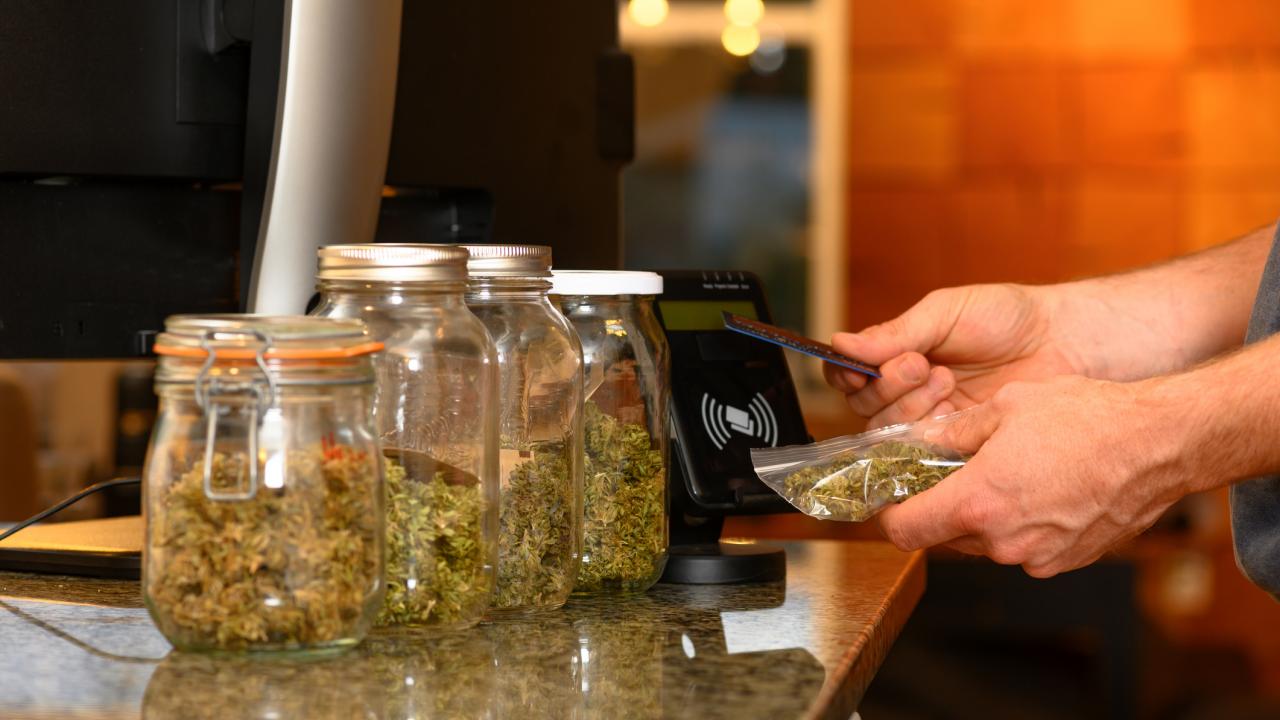Quick Summary
- Suggests alternative pain management could improve outcomes
Counties with a greater number of cannabis dispensary storefronts experience reduced numbers of opioid-related deaths relative to other locales, a recent University of California, Davis, study has found. This is the first study to examine the association between active cannabis dispensary operations — both medical and recreational — and opioid-related mortality rates at the county level, suggesting that providing alternative pain management could improve public health outcomes, researchers said.
“While the associations documented cannot be assumed to be causal, they suggest a potential relationship between increased prevalence of medical and recreational cannabis dispensaries and reduced opioid-related mortality rates,” said Greta Hsu, professor of management at the Graduate School of Management at UC Davis and lead author of the study.
The study was published Wednesday, Jan. 27, in the British Medical Journal. The article was co-authored by Balazs Kovacs of Yale University.
“Given the alarming rise in the U.S.’s fentanyl-based market and in deaths involving fentanyl and its analogs in recent years, the question of how legal cannabis availability relates to opioid-related deaths can be regarded as a particularly pressing one,” researchers said.
According to the U.S. Centers for Disease Control and Prevention — the source for researchers’ opioid data — opioids were involved in 46,802 overdose deaths in 2018, accounting for nearly 70 percent of all drug overdose deaths.
“Overall, greater understanding the public health outcomes of cannabis legalization on opioid misuse is needed for policymakers to properly weigh the potential benefits versus harms of promoting cannabis legalization,” Hsu said.
Significant death rate from synthetic opioids
“As the spread of COVID-19 has overtaken global health resources and attention, another health crisis appears to be silently raging in the background: increasing opioid-related overdose deaths,” Hsu said. Reports from public health tracking systems such as the University of Michigan’s System for Opioid Overdose Surveillance suggest, she said, that opioid-related mortality rates in 2020 increased substantially over previous years.
“But there is an alternative approach to thinking about how to address widespread misuse of opioids: altering the supply of available drugs with potential medical usages in pain management,” Hsu said. “In particular, public health researchers have wondered whether increasing the availability of cannabis, which is generally thought to be a less addictive substance relative to opioids, could be associated with a decrease in opioid-related deaths.”
In this study, researchers looked at the 812 counties (out of more than 3,000 total) in the United States that legally allowed cannabis dispensaries by the end of 2017. They documented opioid mortality rates and counted dispensaries selling cannabis between 2014 and 2018, aggregating all opioid-related deaths but also separating out deaths due to prescription opioids, heroin and synthetic opioids.
Finding a relationship between county-level medical and recreational dispensary numbers and reduced opioid-related mortality rates appears particularly strong with regards to deaths associated with synthetic (non-methadone) opioids, researchers found. This class of opioids includes fentanyl and its analogs, which have sharply overtaken other types of opioids in number of deaths in the U.S. in recent years. (Opioids refer to a class of chemically related drugs that include the illicit drug heroin, prescription pain relievers such as oxycodone and synthetic opioids such as fentanyl. )
By the end of 2018 — the latest date county-level mortality rates available from the CDC — 33 states had legalized medical cannabis, which requires purchasers to a have a medical identification card or doctor recommendation. Ten states, by then, and the District of Columbia had legalized recreational cannabis, which requires buyers to be 21.
There is no federal database for dispensaries. Under federal law, cannabis is still illegal in the United States. To gather data on cannabis dispensaries, researchers examined at county-level data from Weedmaps.com to count actual storefront businesses, with street addresses, that are in operation. Researchers noted that counties oversee criminal justice, social service, and health and emergency service programs — all vital dimensions of the public infrastructure related to drug use and markets.
Other studies of the association between cannabis laws and opioid-related deaths often focus at the state level. However, the researchers noted that a focus on state legislation can be less reliable because state laws sometimes take months or years to go into effect. Further, many local counties within cannabis-legal states do not allow storefronts or other sales opportunities, limiting access to cannabis among individuals within those counties.
“As business school researchers, we tracked evolving cannabis markets across the U.S. from 2014 onwards in an effort to understand how this new category of organizations emerged,” Hsu said.
“We realized, however, that our county-level database could also be used to examine whether the availability of legal cannabis in an increasing number of geographic areas has any implications for opioid misuse. Allowing for legal sale of cannabis is a key step in increasing its availability, since it shifts the cost structure of supplying cannabis, making cannabis more easily and widely accessible to customers.”
Researchers said more study is needed to determine if there is true cause and effect, and that other issues still must be considered. “At the same time, cannabis’ potential harms for adolescent’s cognitive development, medical conditions such as schizophrenia, and public safety risks should not be ignored,” Hsu added.
Media Resources
Karen Nikos-Rose, News and Media Relations, 530-219-5472, kmnikos@ucdavis.edu
